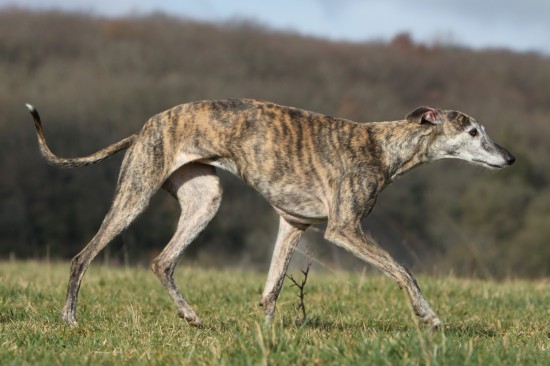

Just thorough watching your dog move around normally, you begin to develop a basic awareness of your dog’s gait, and how they move, which helps you to identify any potential problems such as lameness, and if anything changes as your dog gets older. Watching how your dog moves can also tell you if they are getting tired, and can even help to tell you if your dog might be a good choice for taking part in canine sports or energetic exercises.
In competitive dog shows, the movement and gait of the dog is actually judged as part of the show, and can make a difference in how well your dog scores against the competition- but many dog owners have only a peripheral understanding of the range of canine movement, and the gaits that the dog is capable of!
In this article, we will look in more detail at the different gaits of the dog, how they are used, and what they can tell you. Read on to learn more!
There are six distinctive different gaits that the dog possesses: walk, amble, pace, trot, canter and gallop.
Walking is the gait that conserves the most energy in the dog, and is a four-beat gait, which means that each leg is lifted in turn, and three legs stay in contact with the ground at all times.
The walking gait starts with the left back leg, then the left front leg, then the right back and the right front. The head of the dog rises when the front legs come back into contact with the ground, and swing down when they are lifted.
The amble gait is distinctive from the walk, and is generally a short stage between the walk and the trot. It is similar in appearance to pacing, which we will cover in a moment, but is a little slower. Generally, the amble movement is only used when transitioning from walk to trot, and can rarely be seen for more than a few paces at a time! When in amble, the dog’s legs move in pairs, with the left back leg lifting with the left foreleg and vice versa. This is a two-beat gait, with two legs off the ground at any given time.
The pace, or pacing, is a relatively unusual gait that not all dogs utilise, and in fact, pacing is usually classed as a fault when showing dogs in breed shows. There are only three dog breeds for which the pace is considered to be a breed-appropriate gait, and these are the Neapolitan mastiff, the Old English sheepdog, and the Polish lowland sheepdog.
Pacing is a relaxed, relatively slow gait that is nevertheless faster than the walk and the amble, and one that is very shock-absorbing and provides a lower impact upon the limbs than most other gaits. It can most commonly be observed in very large breed dogs, and dogs that are overweight or tired. Puppies of all breeds may display a pace gait before they learn to trot, but once they have developed that skill, pacing is usually forgotten!
The movement of the pace is the same as the amble, with two feet on the floor at any given time, and the two legs on the same side moving in tandem. The pace is slightly faster than the amble, and usually involves the feet being lifted slightly higher off the floor.
The trot, or trotting, is faster than the walk, but not as fast as the canter or gallop! Trotting is the most efficient canine gait in terms of endurance and miles covered, and involves a two-beat movement where the front and rear leg diagonal to each other are lifted together. There is a very brief period of suspension, when all four of the limbs are technically off the ground at the same time during the transition, but you have to look hard to see it!
The trot is the gait that you will be most likely to be asked to display in your dog in dog shows, and in fact the term used by judges to ask the handler to bring their dog up to a trot is usually “please gait your dog.”
Canter is a term that we usually associate with horses, but dogs are able to canter too! Cantering is a smooth, low-impact movement that is up a pace from the trot, and allows the dog to cover the ground relatively quickly without expending excess energy.
Cantering is a three-beat gait, which involves both of the rear legs moving at the same time as one of the front limbs, a brief period of suspension, and then the opposite front leg accompanied by the two rear legs again.
The gallop is the top end of the canine speed scale, and this is the gait you will see when your dog is running flat out! Galloping is a four-beat gait, which incorporates a period of suspension. Sighthounds also possess a sub-gait called the double-suspension gallop, where the dog’s front legs are fully extended forward simultaneously with the rear legs being extended backwards.
While the gallop is the fastest pace possible, it can only be performed in short bursts, as it requires a lot of energy and does not lend itself to endurance!
Copyright © 2005-2016 Pet Information All Rights Reserved
Contact us: www162date@outlook.com